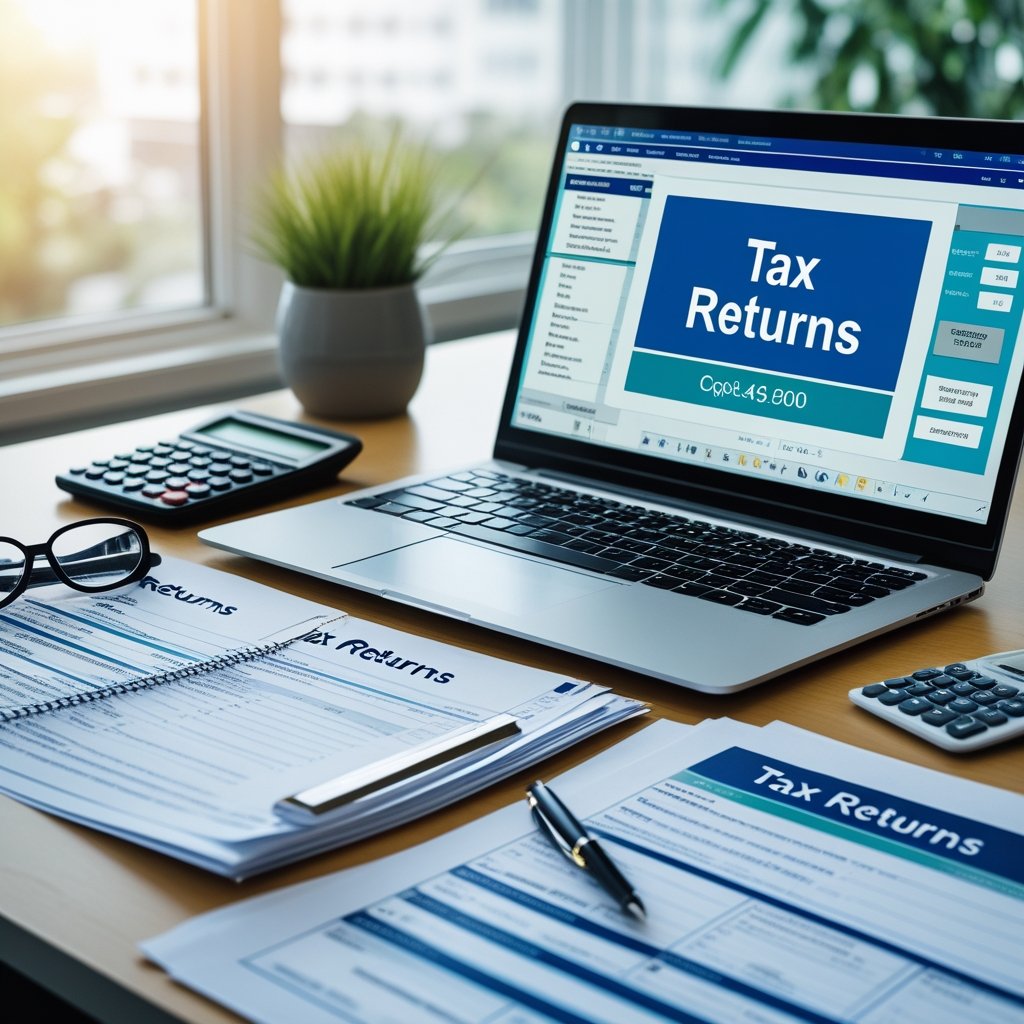If you don’t have W2s or tax returns, you might think getting a mortgage is out of reach. But the truth is—there are flexible options that don’t follow the bank’s rulebook.
Many Texans, especially those who are self-employed or paid in cash, are finding ways to buy a home without traditional paperwork. You don’t need to wait years or chase perfect documents to become a homeowner.
Owner financing and other nontraditional loan options let you qualify using bank statements, business records, or even your rental history. These methods look at your real ability to pay, not just what’s on paper.
Houston Owner Financing helps buyers across Texas navigate this process. We find homes without the need for W2s, tax returns, or bank approvals.
In this guide, we’ll show you how to get a mortgage without W2 or tax returns—and why it might be easier than you think.
Understanding Mortgages Without W2 or Tax Returns
Getting a mortgage without traditional proof of income might seem tricky. You still need to show lenders that you can repay the loan. These loans work differently and can fit your unique situation.
What Is a No-Doc Mortgage?
A no-doc mortgage means you don’t have to provide W2 forms or tax returns. Instead, lenders use other proof of income, like bank statements or profit and loss reports. This type of loan fits people with self-employment, irregular income, or those who don’t file taxes in the usual way.
No-doc loans often have higher interest rates because lenders take more risk with less income proof. You might also need a bigger down payment or a higher credit score.
Some lenders offer options that help you skip these strict rules and still get a home.
Why Traditional Income Verification Is Required
Lenders usually ask for W2s and tax returns to check stable income. These documents prove you earn enough to pay back the mortgage and help the lender calculate how much you can afford.
Without these papers, lenders must rely on less clear evidence. If you don’t follow the typical income verification path, you’ll need to show financial strength in other ways, such as strong savings or a history of steady deposits.
Who May Need an Alternative Loan?
You might need a loan without W2s or tax returns if you are self-employed, work freelance jobs, or earn income from tips or cash. Immigrants or people new to the U.S. can also face trouble proving income traditionally.
If your credit score is low or you have no credit history, traditional lenders often turn you down. Alternative loans give you a chance to qualify by using more flexible rules.
Eligibility Requirements and Lender Criteria
Qualifying for a mortgage without W2s or tax returns involves some specific rules. Lenders look closely at who you are, your credit history, and how much money you can put down. Knowing these details helps you understand what kinds of loans you may get and what to prepare for.
Typical Borrower Profiles
You don’t always need a traditional job to get a mortgage. Many lenders accept self-employed people, freelancers, or those earning income in ways that don’t show up on tax returns.
If you are a small business owner, a gig worker, or have rental income, you might still qualify by showing bank statements, invoices, or other proof of steady income. Some lenders also work with people who get Social Security, disability, or retirement income.
Some services support buyers who don’t fit the usual mold. If your income is less predictable, you still have opportunities by proving you can pay the loan.
Credit Score Expectations
Your credit score may affect your mortgage options without W2s or tax returns. Lenders usually want to see a credit score of at least 600 to 620. Scores below that can still work, but you might face higher interest rates or bigger down payment requirements.
You should check your credit report for mistakes and improve your score if you can before applying. Paying down debt and avoiding new credit inquiries help boost your score.
Some lenders may be more flexible if you show a solid payment history outside of traditional credit.
Minimum Down Payment Guidelines
Down payment amounts vary a lot for nontraditional loans. Typically, you’ll need to put down between 10% and 25% of the home’s purchase price.
A larger down payment lowers the risk for the lender, which can improve your chances. It also means you’ll have lower monthly payments.
If you are able to save more, lenders see you as more reliable. Sometimes, owner financing options let you negotiate smaller down payments compared to banks.
Alternative Documentation Options
If you don’t have W2s or tax returns, you can still prove your income when applying for a mortgage. You can use different types of paperwork that show your financial situation clearly. These options help lenders understand your ability to pay without traditional income proofs.
Bank Statement Loans
Bank statement loans use your monthly deposits to show income instead of tax forms. You’ll need to provide 12 to 24 months of bank statements. Lenders add up the average amount of money coming into your account to estimate your income.
This is great if you have irregular income or are self-employed. You must make sure your deposits are consistent and easy to track. Specialized lenders in Texas may accept this method.
You should also be ready to explain the source of large or unusual deposits. This helps lenders feel confident that you have steady funds to cover your mortgage.
Asset-Based Mortgage Programs
If you have savings, retirement funds, or other assets, you can use these to qualify for a mortgage. Lenders look at your total assets instead of your monthly income. This option works well if you have a good amount of money in the bank or investments, but no regular paychecks.
You’ll show bank statements, investment account summaries, or proof of valuable property. The lender calculates your total value and may offer a loan based on a percentage of those assets.
This approach fits buyers who want to buy now but haven’t been earning a steady income for some time. Some sellers in Texas accept flexible terms.
Profit and Loss Statement Loans
A profit and loss (P&L) statement is a summary of your business income and expenses. If you own a business without W2s or tax returns, you can often use this document for a mortgage. It shows your business’s profit over time.
You may need to provide supporting bank statements and business records as well. The lender will review your P&L to confirm your ability to repay the loan.
For this type of loan, accuracy is key. Make sure your P&L is detailed and up to date.
Application Process for Non-Traditional Mortgages
Applying for a mortgage without W2s or tax returns follows different steps than a regular loan. You’ll need specific documents that show your income and financial stability in other ways. The approval timeline might be quicker, but it requires careful preparation and clear communication with your lender.
Step-by-Step Application Guide
First, fill out an application, usually online or in person. Be ready to explain your income type and why you don’t have W2s or tax returns. This could be because you’re self-employed, a contractor, or have irregular income.
Next, the lender reviews your documents to verify your earnings and ability to pay. Working with a flexible financing service can guide you through this process with advice tailored to your situation.
You may be asked for a credit check or other proof of financial history. After review, the lender decides if you qualify and offers terms based on your information. This process usually moves faster than a traditional bank loan.
Paperwork and Documentation Needed
Since you don’t submit W2s or tax returns, you will need other proof of income. This might include:
- Bank statements showing regular deposits
- Profit and loss statements if you have a business
- Letters from clients or contracts proving steady work
- Identification, like a driver’s license or passport
You might also provide a rent history or proof of other assets you own. This paperwork helps the lender understand your financial situation clearly.
A knowledgeable financing advisor can assist you in making your application smoother. Make sure everything you submit is clear and complete to avoid delays.
Timeline and Approval Process
The timeline for approval depends on how quickly you can provide paperwork. Usually, it takes one to three weeks from application to approval. Faster responses happen if you have your documents ready and communicate well.
Once the lender verifies your information, they’ll make an offer. You may get pre-approved early, giving you a better idea of your budget when house hunting.
After approval, the closing process can take another two to four weeks, depending on negotiations and paperwork. Working directly with sellers through owner financing often speeds this up compared to banks.
You’ll know each step, so you understand what’s needed next. Stay in touch with your lender and respond quickly to avoid delays.
Finding the Right Lender
Choosing the right lender is key when you want a mortgage without W2s or tax returns. You need someone who understands nontraditional income and offers flexible options. Knowing the mortgage products and asking the right questions will help you find a lender that fits your needs.
Specialized Lenders and Brokers
Traditional banks usually want W2s and tax returns. But some lenders and brokers specialize in no-documentation loans. These lenders focus on your overall financial picture, like bank statements or asset income.
If you are self-employed or working gig jobs, look for lenders who offer owner financing or loans based on your cash flow. Some companies provide flexible agreements tailored to Texans with nontraditional income.
Working with a specialized broker can also save time. They compare several lenders for you and find those that accept alternative proof of income.
Comparing Mortgage Products
Not all loans without W2s are the same. Some loans require higher down payments or charge higher interest rates. Others may have prepayment penalties or longer approval times.
Make a chart to compare:
| Feature | Loan 1 | Loan 2 | Loan 3 |
| Down Payment | 10% | 15% | 5% |
| Interest Rate | 6.5% | 7.0% | 6.8% |
| Prepayment Penalty | No | Yes | No |
| Approval Time | 2 weeks | 1 month | 3 weeks |
Look for loans that match your budget and timeline. Consider extra fees like closing costs or mortgage insurance.
Questions to Ask a Potential Lender
When you talk to a lender, be ready to ask key questions. This ensures you understand their terms and your responsibilities.
Some important questions include:
- What types of income documentation do you accept?
- Do you offer owner financing or alternative mortgage options?
- What credit score or history do you require?
- What are the interest rates and fees?
- How long does the approval process take?
- Are there any penalties for early payoff?
- Can you explain the payment schedule and total costs?
Asking these questions helps you avoid surprises and find a lender who works with your unique situation.
Pros and Cons of No-Doc Mortgages
No-doc mortgages skip the usual paperwork like W-2s and tax returns, which can be helpful if your income is hard to prove. But they come with both benefits and risks you should know before choosing this option.
Advantages for Self-Employed Borrowers
If you work for yourself, no-doc mortgages make it easier to qualify since you don’t need to show tax returns or W-2 forms. You can get a home loan even if your income varies or you have complicated finances.
Lenders focus more on your assets, credit score, or bank statements. You can get approved faster because there’s less paperwork to review.
Some financing options connect you directly to sellers. This helps if traditional lenders turn you down because they can’t verify your income in the usual way.
Potential Risks and Higher Costs
No-doc loans usually come with higher interest rates. Lenders charge more because there’s more risk when they can’t check your income the usual way.
You may need a larger down payment, often 20% or more. This protects lenders if you can’t keep up with payments.
Be careful about scams or deals with hidden fees. Some no-doc loans have strict terms that can catch you off guard later.
Before signing, make sure you understand every cost and condition. Using trusted resources can help you avoid common pitfalls.
Tips for Success When Applying
You need to prove your ability to pay without W2s or tax returns. Showing steady income and good money habits helps lenders trust you.
Demonstrating Financial Stability
Show consistent income with bank statements, profit and loss sheets, or payment histories. Gather documents that prove you have enough money to cover your home loan and monthly bills.
Keep your debts low and pay bills on time. Lenders want to see you manage your money well, even if you don’t have traditional paperwork.
Putting down a larger down payment also shows you have skin in the game. This lowers risks for the lender.
Improving Approval Chances
Build a solid credit history if you can, even with non-traditional credit like rent or utility payments. Prepare a clear explanation of your income sources. Being honest and organized speeds up the process.
Offering references or letters from clients or employers can also boost your application. This helps lenders feel more confident about your finances.
Alternatives to No-Doc Mortgages
If you can’t provide W2s or tax returns, you still have options to help you buy a home. These methods focus on your actual income or let you team up with someone who boosts your chances.
Stated Income Loans
Stated income loans let you tell the lender how much money you earn without showing W2s or tax returns. You provide proof of other financial documents like bank statements or profit and loss reports. This can work well if you are self-employed or have irregular income.
Lenders may ask for larger down payments or charge higher interest rates with stated income loans. It’s important to have a clear picture of your income and savings.
Using a Cosigner or Co-Borrower
If your income or credit isn’t strong, getting a cosigner or co-borrower could improve your chances. A cosigner signs the loan with you and agrees to pay if you don’t. This lowers the risk for the lender.
Choose someone with stable income and good credit, like a family member or close friend. This option still requires trust since the cosigner becomes legally responsible. Having a co-borrower also means their income counts toward loan approval, which can help you qualify even without traditional documents.
Final Thoughts on Mortgages Without W2 or Tax Returns
Getting a mortgage without W2s or tax returns can feel tricky, but it’s not impossible. Many lenders look for proof of income in different ways, and owner financing is a good option if traditional banks say no.
With owner financing, you work directly with the seller. You can skip the complicated bank rules about credit scores or documents like W2s. It’s a good choice if you have nontraditional income, are self-employed, or have bad credit.
Here’s what you gain with these options:
- Flexible terms that fit your budget
- Fast approvals without long waits
- No need for perfect credit or traditional paperwork
Owner financing lets you focus on what matters: owning your home sooner. You don’t have to worry about tax returns holding you back. Instead, you get clear, step-by-step guidance through the process.
If you want to explore home loans without a bank or other flexible home financing options, Houston Owner Financing can help you every step of the way.
Book a free call today to get started on buying your home in Houston!
Frequently Asked Questions
Qualifying for a mortgage without W2s or tax returns means using different proof of income and financial stability. Many lenders look at bank statements, assets, or alternative income documents. Some loan options cater specifically to folks who don’t have traditional pay stubs.
How can one qualify for a mortgage without proof of traditional income?
You can use bank statements to show consistent deposits. Some lenders accept profit and loss statements or letters from clients if you’re self-employed. Proof of savings or other assets can help prove you can pay your mortgage.
What options are available for self-employed individuals seeking a mortgage?
Self-employed buyers often use bank statement loans or stated income loans. Some lenders also accept a CPA letter to verify your business income. Programs through Houston Owner Financing offer flexible terms if standard loans aren’t a fit.
What lending alternatives exist for purchasing a home without tax returns?
Owner financing is a common alternative because it doesn’t rely on tax returns or W2s. You buy directly from the seller, making the process faster and less strict. Private lenders may also offer loans based on assets or credit history instead.
How might a person without W2 income demonstrate financial stability to a lender?
Showing a steady bank account balance over time helps. You can provide profit and loss statements or show other income sources like rent or investments. Having a good credit score or a larger down payment improves your chances, too.
Can you obtain an FHA loan without recent tax return documentation?
Usually, FHA loans require tax returns. But if you’re self-employed or have non-traditional income, some lenders may accept alternative paperwork, like bank statements. Rules vary, so it’s important to check with your loan officer.
What measures do mortgage lenders have in place for non-traditional income verification?
Lenders often review 12-24 months of bank statements to spot regular income. They may ask for a letter that explains your income source or request extra documents like business licenses. Houston Owner Financing offers options that skip some of these requirements.




